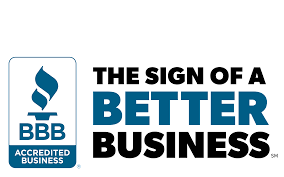What To Do When Homeowners Are Harassing Board Members
March 10, 2020

As a board member, you’ve surely seen emotions run high at your association meetings. Whether you lead a condo association or homeowners association, you know the subjects discussed at your meetings involve people’s homes, their quality of life, and their finances—topics that can be tricky to talk about, especially when lots of opinions are present. Even if you strive to build good relationships with your fellow residents, things can go awry.
We can all think of that one homeowner who is habitually disrespectful and rude at meetings, prone to angry outbursts, and perhaps even physically aggressive. But at what point does boorish behavior and an aggressive attitude cross the line to verbal and physical harassment?
#1: Define Harassment in Your Governing Documents
In your bylaws, define unacceptable behavior at meetings. The bylaws should include how the association’s meetings are run as well as other info regarding HOA operations. When writing (or revising) the bylaws, you have the opportunity to definitively articulate harassment and abuse, including examples. State that those actions will not be tolerated and describe the consequences (fines, sanctions, legal action).
While homeowners retain the right to complain, the bylaws should include specifications that prohibit certain forms of speech (e.g. threats of violence, insults, name calling, profanity, obscenity, confrontational words, defamation) and other forms of harassment (e.g. physical aggression/intimidation/harm, offensive emails/voicemails, stalking, etc.). Meeting agendas should also include language that says, “Attendees may not engage in obscene gestures, shouting, profanity, or other disruptive behavior. If attendees become disruptive, they may be expelled from the meeting and fined/sanctioned.”
Defamation is also unacceptable behavior, if the intent is malicious. Legally, however, discussions among the members of a restricted group, like an HOA, for the purpose of furthering corporate business allow libel (written) and slander (spoken), as long as it’s not malicious. That means it’s passible if a homeowner discusses the potential of a board member being a thief among other homeowners, as long as the person doesn’t have the motive to spread rumors to form a sentiment to remove the board member.
Right to “Quiet Enjoyment” Clause
In your CC&Rs, there should be a clause that says homeowners have the right to “quiet enjoyment” of their homes. That doesn’t necessarily mean freedom from noise, but it means you have the right to live in your community without being annoyed, harassed, or interfered with. Altitude Law recommends amending your CC&Rs with the following clause:
Members and other residents shall not engage in any abusive or harassing behavior, either verbal or physical, or any form of intimidation or aggression directed at other members, residents, guests, occupants, invitees, or directed at management, its agents, its employees, or vendors.
Creating this basis gives your board legitimacy to pursue action against a homeowner who is in violation of policy. However, if the process to amend your documents is too cumbersome, create a rule instead. A rule is much farther down on the hierarchy of association governing documents, but will still hold up in court if it’s reasonable and unambiguous.
#2: Write a Letter to the Offender
When the treatment of a board member becomes such that they can’t do their job, the harassment becomes a serious problem and action should be taken.
First, write a letter informing the homeowner their behavior has violated the association’s governing documents. Be specific about the occurrences and describe the behavior in detail. Then, let the offender know they will be subject to fines (as outlined in the documents), other specified sanctions, or even legal action if the behavior does not stop. You can also suggest alternate means of getting the offender’s point across, like writing a list of their grievances and submitting it to the board for review.
For most disgruntled homeowners, a letter threatening punishment should do the trick. It’s common for someone to get carried away by emotion and overreact when the association is handling frustrating issues. Simply reminding them that actions have consequences can usually put the unacceptable behavior to rest.
#3: Get a Civil Restraining Order in Court
For some aggressors, however, a letter and sanctions won’t change the behavior. It might even make it worse if they’re still not getting their way. In this case, you should escalate the issue to court.
Depending on what the harassment is, get a restraining order that would be appropriate. If the frustrated homeowner is limiting the harassment to email, they may be banned from emailing the board member they’re harassing. If the verbal attacks also happen in public, the homeowner might be ordered to remain a specified distance away. The board may also extend a restraining order to prohibit the offender from speaking at meetings or totally ban them from attending.
Civil restraining orders are a serious matter, and so getting a court to grant you one may be a challenge. The New Jersey Courts system has composed a resource to see if you qualify for a civil restraining order. You can ask for a restraining order if “the offender has abused (or threatened to abuse), stalked, or seriously harassed you and you are scared, seriously annoyed, or harassed.” In many cases as well, harassment must be patterned behavior rather than isolated incidents. You must feel threatened. If you can, keep evidence of the harassment in the form of email, voicemail, or recorded videos of action.
Involve the Police
If a homeowner threatens a board member with acts of physical violence, dial 911 immediately. A board member should never fear for their safety for fulfilling their role and responsibilities of being on the board. Even if the threats seem empty, still call the police if there is concern of assault. Additionally, having a police report on file will help if you choose to go to court.
Who Pays for the Civil Proceedings?
Should the board use the association’s funds to fight the harassment? According to the law firm Altitude Law, it’s appropriate. This is because the board member is being harassed for their actions as a board member and because the harassment is preventing them from doing the job for which they were elected. That means it’s not just a personal issue—it’s an association issue.
Also, seeking a restraining order is not a usually major expense—these cases move quickly and don’t require a lot of preparation or time in court. It’ll likely only come out to a few hundred dollars for court costs and legal fees.
Option to File Criminal Charges
Filing charges against a neighbor is the most extreme course of action and happens only rarely, like in the example you’ll see below. It’s unlikely you’ll get to this place, but it’s important to understand the proper escalation procedures if, or when, you need to act on severe harassment. It’s important to note though, that even if the neighbor is found guilty of harassment or threats, they may not end up serving time. A court may order mental health treatment as the solution to the problem.
If you’re taking the homeowner to court for defamation, be aware of the line between discourse protected by law and illegal defamation. If a homeowner is actively attempting to ruin your reputation by accusation of reprehensible or criminal activity that is unsubstantiated, and the defamation can be proved to the court, you will likely be able to walk away with a payment for damages.
A Real World Example
In this extreme case of board member harassment in California, a homeowner was found in violation of a restraining order obtained by the board for relentless harassment of a manager. As a result, the judge decided to bar the owner from using recreational facilities in his own HOA and pay more than $10,000 in legal fees and costs.
#4: Get Other Homeowners Involved
It can be uncomfortable to get others involved, but you can benefit from engaging your community. If a bullying homeowner is continually disruptive and refuses to follow the directions of board members (e.g. stop yelling, sit down, etc.), they may follow if other homeowners repeat the direction to them. If other members of the association maturely address the offender and tell them the behavior won’t be tolerated, it’s more likely the situation will be resolved—bullies won’t stand up to a crowd, and embarrassment can tone down aggression.

Prevent the Issue with a Third-Party Manager
Has your association considered bringing on an association manager? A professional property manager has the skills and training to help properly navigate situations like resolving conflicts within an association and dealing with legal matters. This makes sure they’ll take care of any harassment issues from mediation to arranging court visits.
An association manager can also help collect dues, manage the group’s finances, handle maintenance issues, and deal with any other crucial responsibilities a board may have.
Association managers also understand that being a board member is not your primary job, and you likely don’t have deep experience with all of the tasks required of you—that’s why it’s good to hire an expert.






